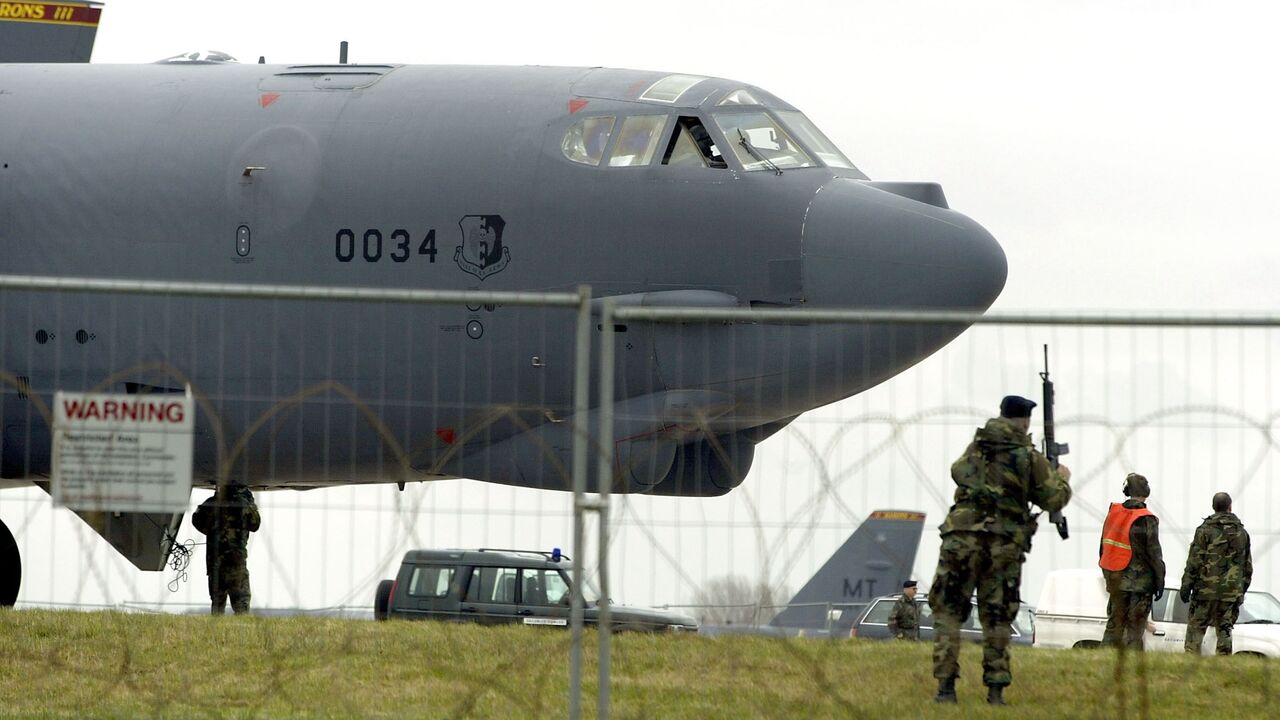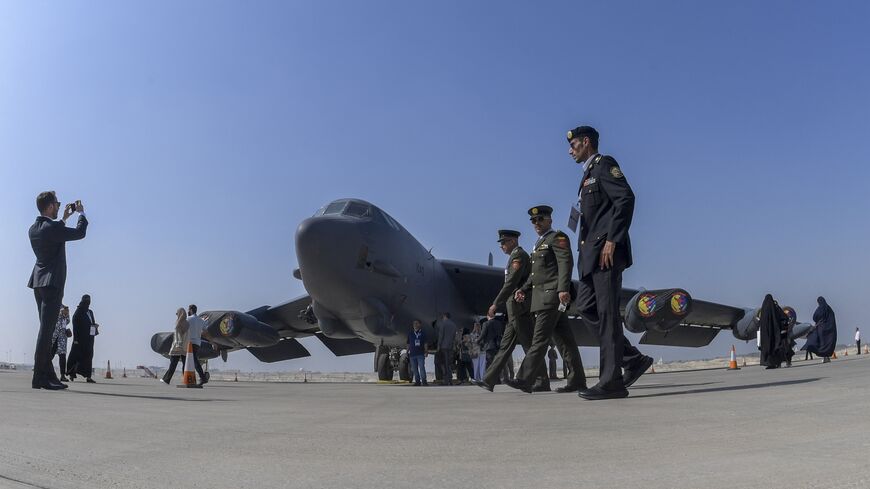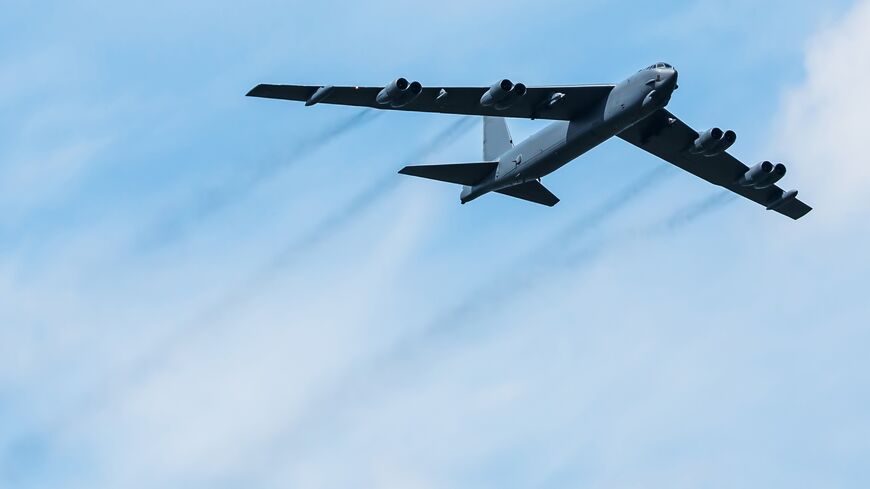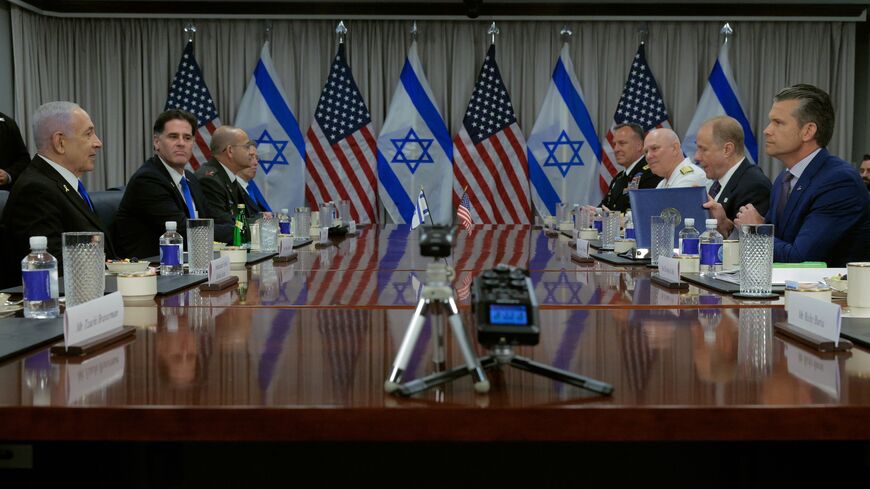US launches second B-52 bomber flight over Middle East in 2 days
Strategic bomber sorties come as the Donald Trump administration says it prefers to halt Iran’s uranium enrichment through diplomatic negotiations rather than military action.

WASHINGTON — The Pentagon authorized a sortie of US Air Force B-52 strategic bombers over the Middle East for the second time in just two days, flexing long-range muscle as the Trump administration pressures Iran to come to the negotiating table over its advancing nuclear enrichment.
The B-52s out of Royal Air Force base Fairford in the UK flew over six US-aligned countries in the region, linking up with a fighter escort provided by one country in the region, US Central Command said in a statement.
On Tuesday, a pair of USAF B-52s launched from Fairford traversed the air space of nine countries in the region, escorted along the way by fighter aircraft from four Middle Eastern states. Officials at US CENTCOM declined to say which countries took part, citing diplomatic sensitivities.
Why it matters: The overflights come as US President Donald Trump's administration says it aims to halt Iran’s uranium enrichment via diplomatic negotiations, rather than military means.
US national security adviser Mike Waltz told Fox News on Sunday that Trump is “dead serious” about halting Iran’s nuclear program, noting that “all options are on the table.”
Waltz further suggested that if Iran’s leaders want to negotiate for sanctions relief, they should “give up their entire [nuclear enrichment] program” and “not play games as we’ve seen Iran do in the past.”
The bomber sorties also coincided with a sudden interruption in the deployment of the aircraft carrier USS Truman, which had been based in Middle Eastern waters for the past two months. The carrier collided with a commercial bulk carrier near the northern entrance of the Suez Canal last week, and docked in Souda Bay, Greece, for repairs.
The Truman's commander, Capt. David Snowden, was relieved of duty "due to a loss of confidence in his ability to command," the US Navy's Sixth Fleet said in a statement. Despite the damage, the carrier remains "fully mission capable" and continued to launch fighter aircraft even after the collision, the fleet said, adding that the carrier is expected to continue its deployment.
What’s next: Israeli officials have been urging the Trump administration to strengthen US military and diplomatic commitments in the Middle East to help fill power vacuums left by the weakening of Iran’s strategic proxies in Lebanon and Syria.
Israel’s outgoing army chief, Lt. Gen. Herzi Halevi, met in Washington this week with top Pentagon officials and with head of US Central Command Army Gen. Michael “Erik” Kurilla, who is among the four-stars under consideration to be Trump’s next top military adviser and top-ranking US general.
Know more: Trump and Netanyahu privately agreed earlier this month on shared next steps should Iranian leaders refuse to negotiate a more restrictive deal than the 2015 nuclear agreement, Al-Monitor’s Ben Caspit reported.
The options are not limited to long-range heavy airstrikes that Israeli top brass have sought from past US administrations, a well-placed source familiar with the high-level diplomatic discussions said.
However, Israeli military officials remain insistent that the current moment offers a narrow window of opportunity to execute such an option, as Iran’s Russian-made S-300 air defenses remain ineffective since Israeli strikes targeted them late last year.
The 2015 nuclear deal, known as the Joint Comprehensive Plan of Action, restricted much of Iran’s uranium enrichment to purity levels around 3.67%. Iran has systematically built up its enriched stockpiles since Trump unilaterally withdrew from the deal in 2018, drastically shortening the time it would need to produce a nuclear weapon should its top leaders decide to authorize such a move.
Tehran is expected to amass some 250 kilograms by next month, head of the UN’s International Atomic Energy Agency Rafael Grossi said this week, warning of a narrowing opportunity to reach a new agreement.





